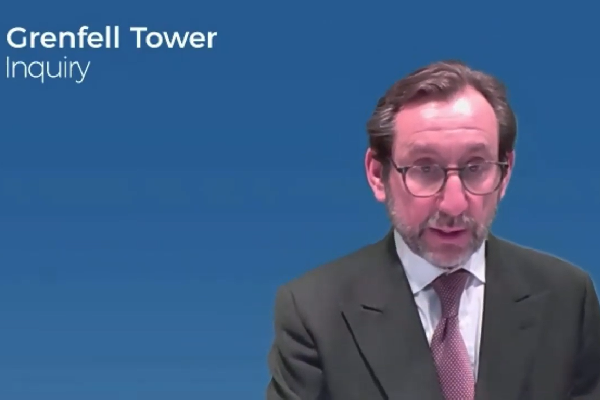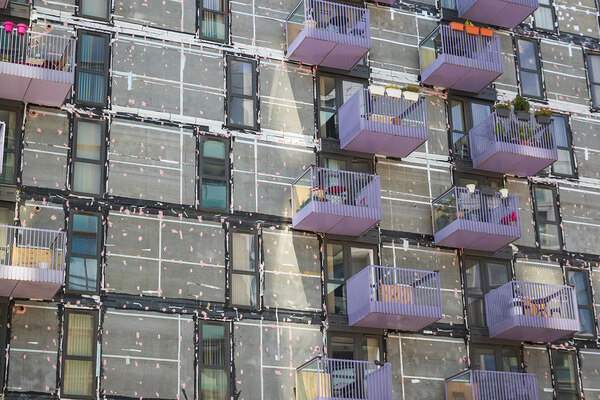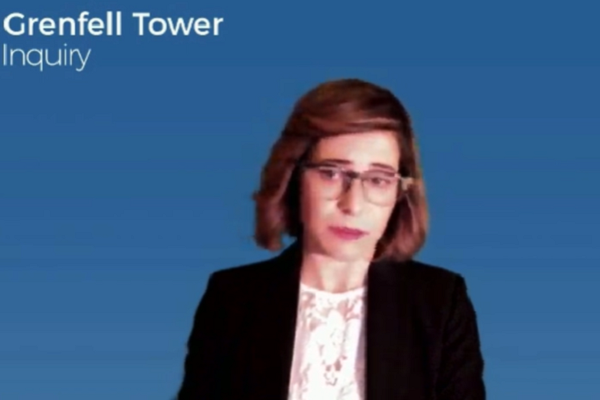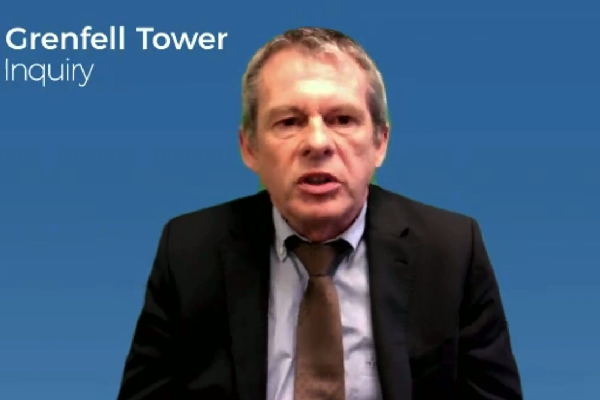Grenfell cladding firm considered possibility of fire killing ‘60 or 70’ people in 2007
A senior manager at Arconic wrote an internal document in 2007 pondering what its responsibility would be if a fire involving its product killed “60 or 70” people in a high-rise building, the inquiry heard today.
Gerard Sonntag, marketing manager at the company which produced and sold the highly combustible cladding used on Grenfell Tower, attended an industry event in Norway, where a representative of another company spelled out a dire warning about the danger of using aluminium composite material (ACM) cladding.
The presentation warned that 5,000 square metres of the product – an amount that would cover a single large tower block – was like adding the fuel power of a 19,000 litre oil tanker to the walls of the building.
Mr Sonntag said the presentation was supported by videos and photos of ACM fires in the Middle East.
“The pictures showed a tremendous big volume of toxic smoke who [sic] is even more dangerous than the fire himself [sic], because in such a case a person can die from the smoke emissions within two or [three] minutes,” Mr Sonntag’s notes said.
He said the speaker, a consultant called Fred-Roderich Pohl on behalf of metal company Otefal, was “a very persuasive person” and that the presentation had given him “a very high [shock]”.
Mr Sonntag wrote that Arconic should “consider the risk” that Mr Pohl, a writer who had published several articles about the dangers of ACM in industry journals, posed to the reputation of its ACM products.
“Let’s imagine Otefal organise a lobbying activity on the European Parliament and show such a presentation… the result could become catastrophic for ACM products,” he said.
“One of the arguments from Mr Pohl was, ‘what will happen if only one building made out of [polyethylene] core is in fire and will kill 60 to 70 persons, what is the responsibility of the ACM supplier?’”
He suggested the company should investigate switching its operation to only supplying the less combustible ‘fire-retardant’ version of the cladding “if we want not to take any risk for anyone”.
The document was disclosed as Richard Millett QC, counsel to the inquiry, presented various documents he would have put to witnesses from Arconic who are refusing to attend the inquiry.
The Grenfell Tower fire killed 72 people in June 2017, with the ACM cladding panels already identified by the inquiry as the “primary cause” of the rapid spread of the fire.
The inquiry has already heard that Arconic launched an ‘FR at PE cost’ project in 2008 – a few months after Mr Sonntag’s warning – aimed at reducing the cost of its fire-retardant (FR) panels to the same as polyethylene (PE).
Claude Schmidt, president of the firm, told the inquiry that this “reflected the company’s understanding of the way in which the market was moving” when he gave evidence last month.
Mr Millett said the inquiry would have liked to have asked Claude Wehrle, a senior member of the technical team, whether it was in fact due to the “known dangers” of PE, as described in this document.
“It’s very clear that questions which arise would include where there any discussions within Arconic about only selling ACM with an FR core,” he added. “If there was, what happened to those discussions? Particularly, was there any discussion within Arconic of Mr Pohl’s question, what is the responsibility of the ACM supplier?”
Arconic continued selling its PE-cored product into the UK market right up until the Grenfell Tower fire.
Mr Sonntag has not been called to evidence. The three that have refused to do so are Mr Wehrle, sales person Gwenaelle Derrendinger and product manager Peter Froehlich.
They initially cited an obscure French law that prevents disclosures to foreign courts, but continued to refuse despite assurances from the French government.
Mr Millett presented dozens of documents, emails and testing certificates today which covered the fire performance of the cladding panels, their certification by the British Board of Agrément (BBA), their sale for use on Grenfell Tower and discussions within Arconic about the dangers of the product in a fire.
On this latter point, he revealed that Mr Wehrle was sent an analysis report of a fire at the Lacrosse Tower in Melbourne, Australia, in 2015 which cited ACM panels as the cause of the spread and listed seven other instances of large fires in buildings with the product installed.
Mr Millett also presented an email – first referenced in opening statements for this part of the inquiry in November – in which Mr Wehrle circulated pictures of a fire at a medical centre in Riyadh, Saudi Arabia, which utilised fire-retardant panels. The images showed the fire spreading extensively but only at the lower levels.
“In PE the fire would have spread over the entire height of the tower,” Mr Wehrle wrote in October 2015. “Long live FR!”
A further email in January 2016, following another fire in the Middle East, shows him saying: “I hope that PE will gradually be excluded from facade cladding because each time it is the image of all the ACMs that takes a hit.”
“Why did Mr Wehrle hope that PE would gradually be excluded from facade cladding while Arconic was continuing to manufacture and sell it?” said Mr Millett.
Finally, a fortnight later on 19 January 2016, Mr Wehrle forwarded images of a fire in Strasbourg at a building neighbouring a tower clad with the Reynobond product.
“We were very lucky,” he wrote, addressing the email to five senior staff members. “Fortunately the wind didn’t change direction but we really need to stop proposing PE in architecture. We are in ‘the know’ and it is up to us to be proactive… AT LAST.”
“The question is what happened to Mr Wehrle’s warning to senior management? Did they do anything about this and if so, what?” said Mr Millett.
The inquiry has already heard that Arconic tested its ACM PE panels in two different forms – riveted (where it is bolted to a building) and cassette (where it is bent to be hung on rails) – in 2004.
While the riveted system obtained a ‘B’ grade which cleared it for use in many European countries, the cassette system failed catastrophically and obtained an E. A further email disclosed today showed a potential customer referring to this grade as “close to spontaneous combustion”.
But this was not initially declared to the market by Arconic, with the test branded a “rogue result” internally and the product widely advertised as Class B.
It was certified as such in the UK by the BBA in 2007, with Arconic failing to provide the report of the failed test to the organisation despite a contractual obligation to do so.
Documents disclosed today showed Arconic discussing the importance of obtaining the BBA certificate in order to access the UK residential market at a series of meetings in 2005.
Further testing in the 2010s led Arconic to classify the product as Class E in January 2014, a decision which was communicated to its sales people across Europe in February of that year.
But Debbie French, the UK salesperson who secured the job at Grenfell Tower, did not pass this information on to the team who refurbished the tower and instead sent them the BBA certificate with the out-of-date ‘B’ grade in March 2014.
Documents disclosed today showed the actual order of the panels for Grenfell Tower was made in March 2015, after Ms French had left the business, with the order processed by Ms Derrendinger. It was logged on Arconic systems as a ‘cassette’ system.
Mr Millett said he would have examined the witnesses on whether or not this meant Arconic knew that a cassette system, with its catastrophic fire performance now confirmed in several tests, was to be used on Grenfell Tower.
Official guidance for England and Wales permitted use of a national standard, Class 0, as an alternative to the B grade.
Mr Millett produced documents showing – as the inquiry has previously heard – that the specific brand of panels sold for use on Grenfell had never been tested to this standard and that Arconic used tests on the fire-retardant version to obtain confirmation of its Class 0 rating from the BBA.
An earlier version of the polyethylene-cored cladding was tested to Class 0 in 1997, but this test was not sent to the BBA.
Witnesses from the BBA will begin giving evidence tomorrow.
Earlier this morning the inquiry heard evidence from Chris Ibbotson, managing director of Panel Systems, which sold the window panels used on Grenfell Tower.
These had a highly combustible core of polystyrene insulation that also had a Class E fire rating.
Mr Ibbotson said this was the product his company offered as standard unless a higher fire grade was specifically requested. He said he did not know Grenfell Tower was a high-rise building.
The Grenfell Tower Inquiry continues.
Sign up for our weekly Grenfell Inquiry newsletter
Each week we send out a newsletter rounding up the key news from the Grenfell Inquiry, along with the headlines from the week
Already have an account? Click here to manage your newsletters














